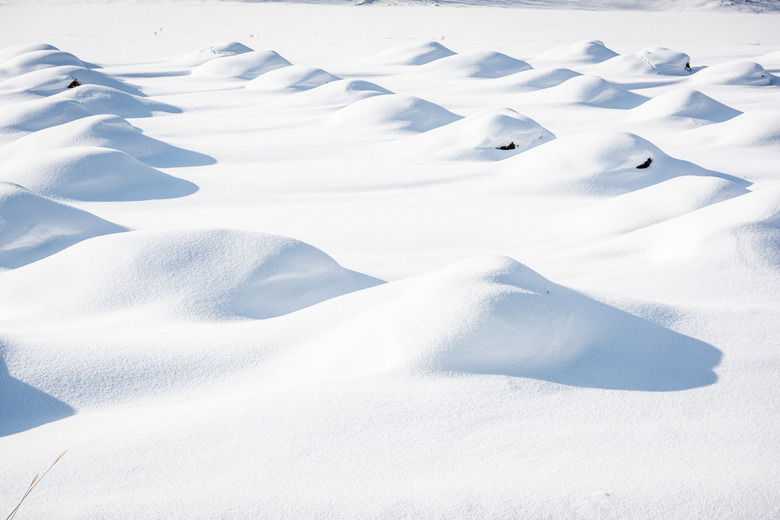Biotic factors are the living components that affect organisms, such as animals that compete for an organism’s food, human influence and the availability of food that an organism consumes. Biotic factors that affect tundra and impact the animals that live there include vegetation structure, location of food, predators and hunting.
Animal Adaptations to Tundra Plants
Tundra plants must adapt to sweeping winds and soil disturbances. Thus, they must group together, be short to avoid the wind and have short growing seasons. In the winter, tundra plants reduce their growth and are protected by the snow, meaning that food is sparse for tundra animals. Therefore, tundra animals often hibernate or migrate south in the winter. As well, tundra animals take advantage of the warmth and availability of food in the summer to quickly breed and raise their young.
Polar Bears as Top Predators
The polar bear’s role in the top trophic level of carnivores in the Arctic tundra has shaped its outward characteristics. Polar bears have special adaptations to help them capture walruses, fish and seals. These adaptations include their ability to swim for long distances after prey, their four-inch thick layer of blubber to protect them from the cold and their ability to close their noses when their heads are underwater thus facilitating catching prey. As well, polar bears have evolved to have broad paws and claws, which make it possible for them to have traction on the ice and swim easily when chasing prey.
Musk Oxen as Primary Consumers
As with polar bears, musk oxen possess traits suited to their niche as grass eaters. Musk oxen have two coats of fur; the outer coat drops to the ground to protect them from wind, snow and rain, while the inner coat consists of warm hair. These coats, along with the broad hooves of musk oxen which help keep them from sinking into the snow, enable them to spend a significant amount of time eating grass.
Arctic Foxes and Human Hunting
Arctic foxes provide an interesting example of human influence on an organism. The Arctic fox has an extremely thick coat as an adaptation to the cold and, as a result, is constantly being hunted. Thus, a couple of different populations of the Arctic fox are endangered. By the same token, however, Arctic foxes, by virtue of their ability to turn white in the winter and brown in the summer, protect themselves against many of their predators in the tundra.
Emperor Penguins
Emperor penguins are well-suited to hunting their primary food source, fish. Penguins have a layer of blubber that is about one-inch thick and, in addition, are exceptionally well-suited to deep diving. Penguins’ bones are mostly solid rather than having air pockets, and when they dive deeply, their heart rates slow, reducing the need for air and stopping the use of unnecessary organs.

